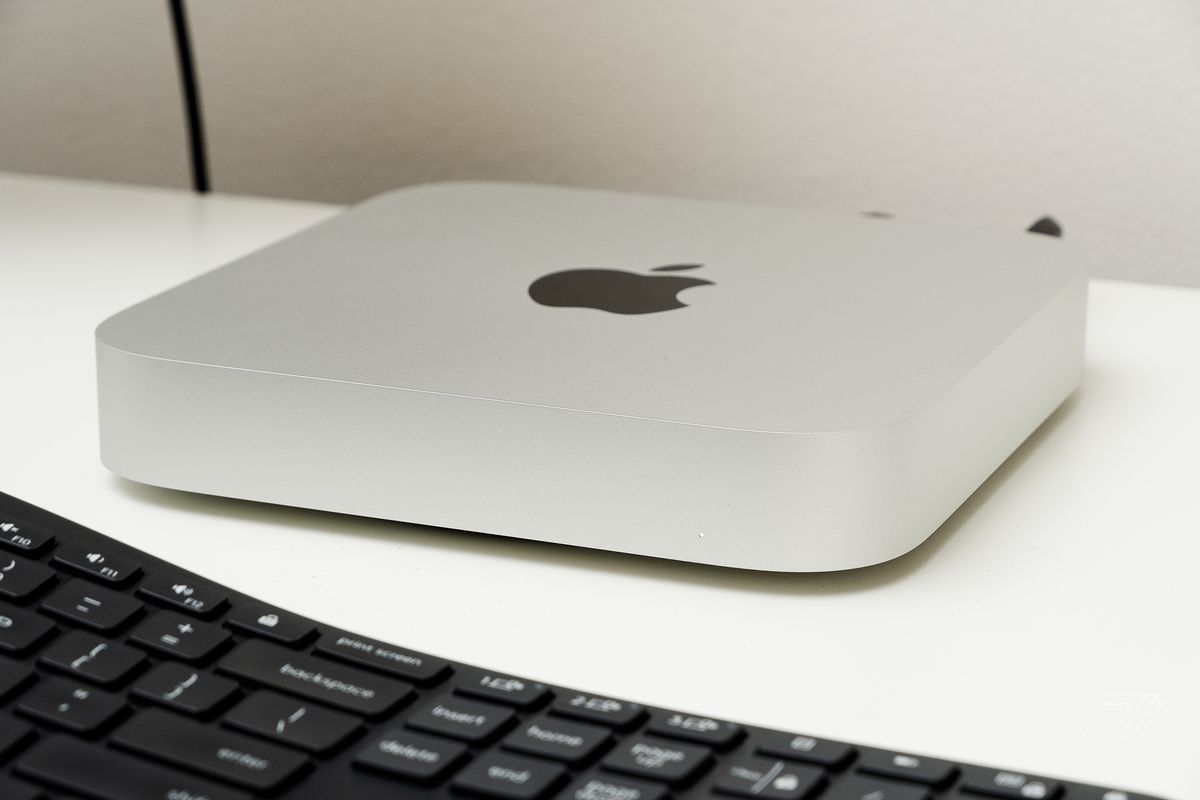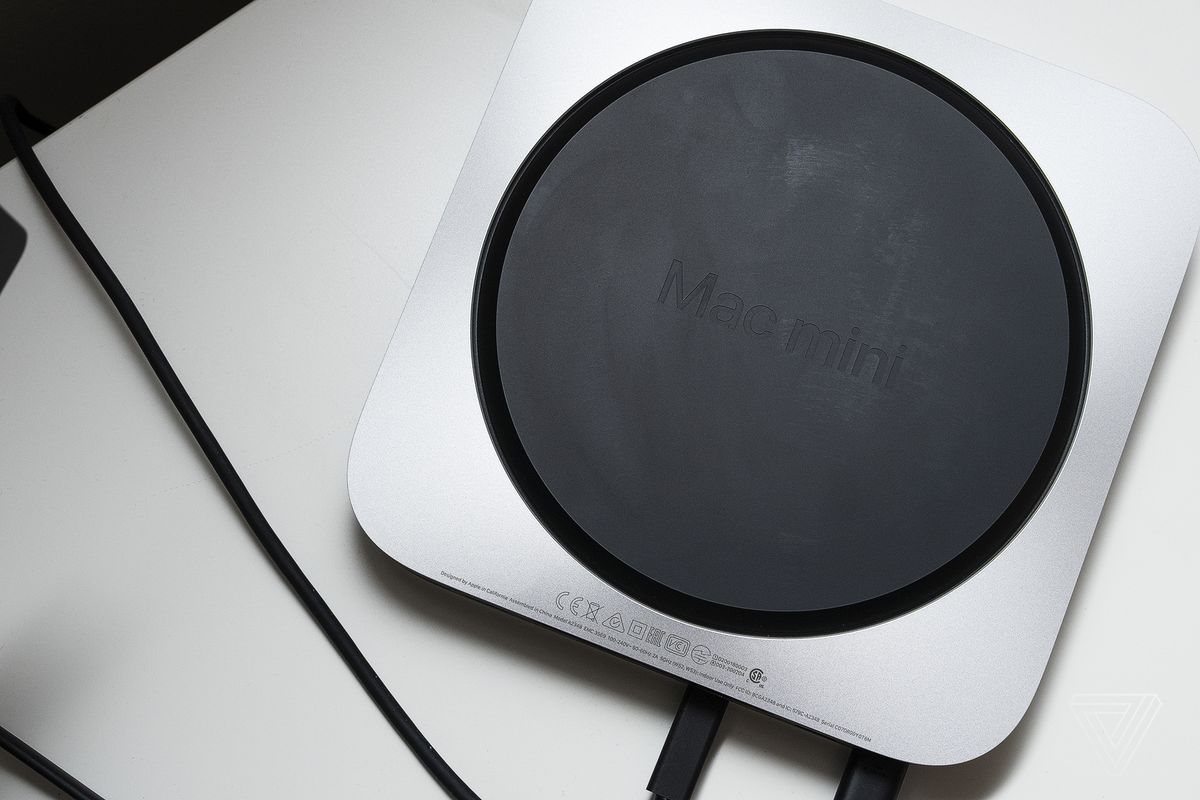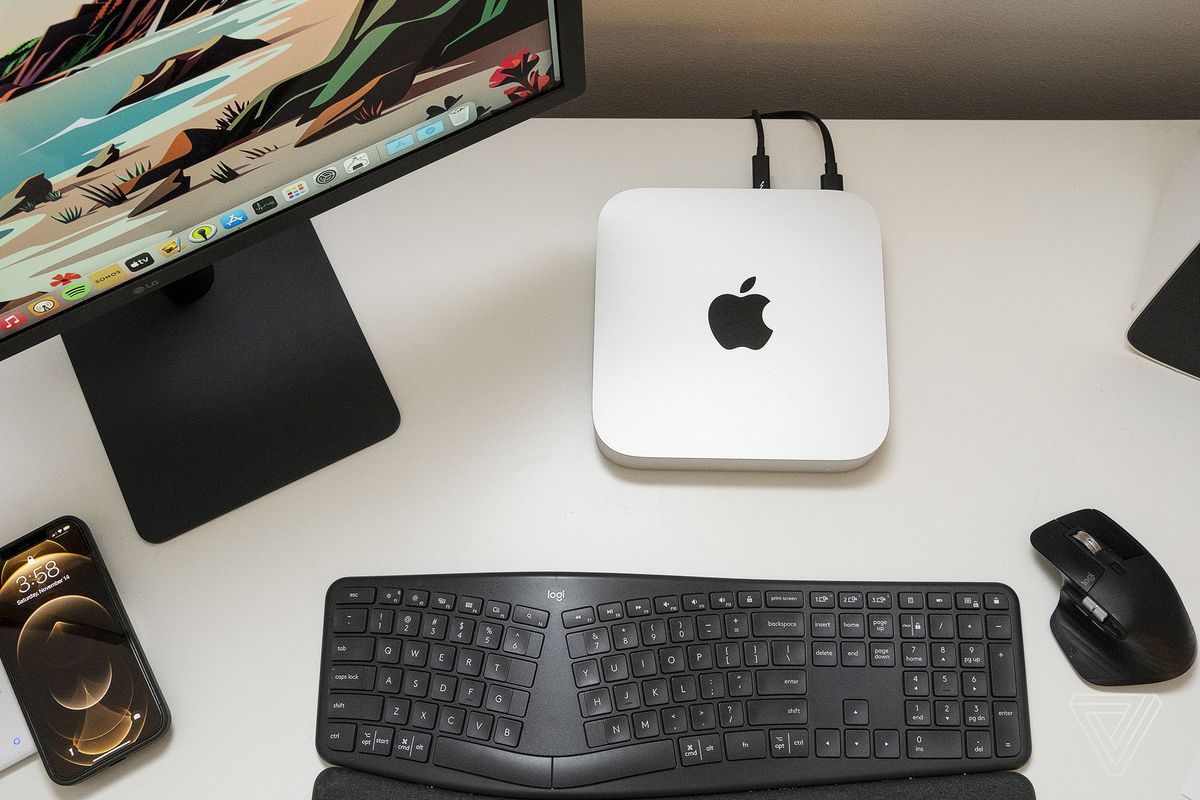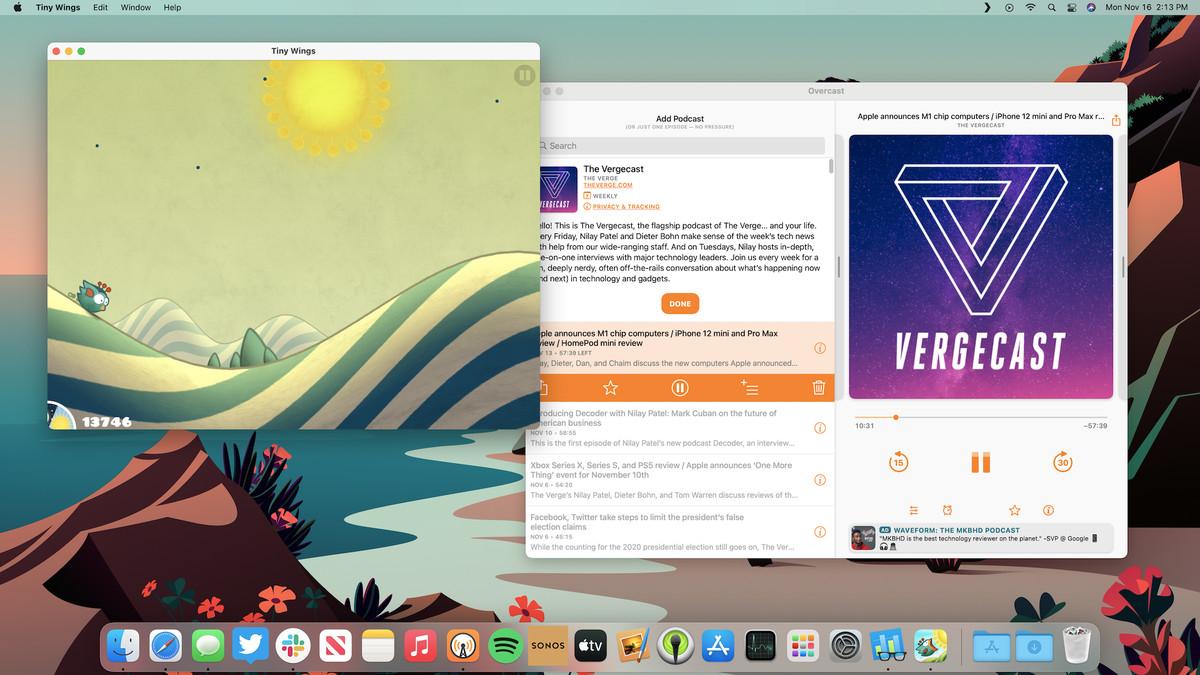Apple mac mini with apple m1 chip (16gb ram, 256gb
The Mac mini has always been Apple’s most flexible desktop computer. Sure, most people go for the traditional experience & plug in a display, mouse, and keyboard — but you can also have it serve as a trang chủ theater PC, or put it to lớn work with professional photo or audio editing, or turn a group of minis into a server farm. Apple opened new possibilities for the mini with the big tăng cấp it got in 2018, & two years later, it’s one of the first three Macs to lớn transition away from hãng sản xuất intel processors và showcase the potential of táo khuyết silicon & the M1 chip. (It’s also worth noting that táo bị cắn was using the mini as its early Arm demo unit for developers, so the company was already partway lớn a consumer product.)
Apple has dropped the starting price for the M1-powered Mac mini down to lớn $699, which is $100 less than before. For that money, you get an eight-core CPU, eight-core GPU, 256GB of storage, & 8GB of RAM. The reviews unit I received costs $1,299, as it increases the SSD form size to 1TB & doubles the memory. But the táo khuyết M1 chip stays the same no matter which configuration you choose, and it matches the one in the new 13-inch laptop macbook Pro. Like that machine, the mini has a fan for cooling, but it also has the most efficiently cooled chassis of all the new M1 Macs. As a result, it’s technically the best performer — even if only by a smidge.
Bạn đang xem: Apple mac mini with apple m1 chip (16gb ram, 256gb
Related
táo MacBook Air with M1 review: new chip, no problem táo bị cắn dở MacBook Pro with M1 review: flexing Arm
I’ve also got lớn point out that getting up & running with the Mac mini can be a hassle. For initial setup, you need a wired keyboard và mouse; my Logitech ergonomic keyboard & MX Master 3, which both connect over Bluetooth, were useless. They work fine after setting up the machine, but just be aware so you don’t run into this initial headache like I did.


If you read Dieter’s reviews of the macbook Air and Nilay’s take on the 13-inch laptop apple macbook Pro, it shouldn’t come as a surprise that the theme of surprisingly great performance applies to lớn the Mac mini. I’ve thrown a lot at this tiny desktop computer over the last several days, and it chews through everything — Lightroom Classic, Plex transcodes, piles of Chrome tabs — with aplomb. & those are all apps that are still designed to lớn run on hãng intel chips.
The first time you install an ứng dụng built for hãng intel chips, you’ll be prompted to download Apple’s Rosetta 2 software, which is the secret sauce in how those apps play so well with the M1 chip. Và since táo bị cắn doesn’t have to trương mục for the tight confines of a laptop enclosure with the Mac mini, the M1 cpu can hit the very best speeds it’s capable of and sustain them without throttling. Heck, I never even heard the fan hâm mộ spin up during repeated 30-minute Cinebench tests or when transcoding several 4K Blu-ray rips back khổng lồ back. The mini has stayed silent no matter how hard I work it.

Xem thêm: Bài Hát Về Con Vật Sống Trong Rừng, Bài Hát Về Con Vật Sống Trong Rừng
Outside of benchmark world, the Mac mini feels wonderfully fast day lớn day. That said, I’ve noticed the occasional odd hitch: sometimes Spotify takes a noticeable amount of bounces in the dock (up to 10) before it opens after a cold reboot of the system. That’s been pretty rare, và once Intel-optimized apps are open, performance feels indistinguishable from how they run on my fully loaded 16-inch apple macbook Pro. I’ve also not run into any glaring phầm mềm compatibility issues, though if there’s some piece of software that’s job-critical for you, it’s probably worth waiting on reports of how it runs on the M1.
M1-based Mac benchmarks
| Cinebench R23 Multi | 6803 | 7729 | 7729 |
| Cinebench R23 Single | 1494 | 1519 | 1520 |
| Cinebench R23 Multi looped for 30 minutes | 5369 | 7729 | 7780 |
| Geekbench 5.3 CPU Multi | 7510 | 7554 | 7711 |
| Geekbench 5.3 CPU Single | 1730 | 1730 | 1754 |
| Geekbench 5.3 OpenCL/ Compute | 18357 | 19211 | 19654 |
Other benefits of the M1 chip, like instant on, aren’t as obvious when using a Mac mini compared to a laptop. Unless you’ve got an hãng apple Watch, you’ll often be typing in your passcode when the mini wakes from sleep, which works against the tốc độ improvements. Would a cảm ứng ID sensor somewhere on the Mac mini be that silly? I’d use it. Battery life isn’t a factor on the Mac mini, of course, và the M1 mini uses the same 150W nguồn supply as the hãng sản xuất intel model, but it’s up khổng lồ 60 percent more energy efficient than the comparable hãng sản xuất intel model. AnandTech did some tests that highlight the reduced nguồn draw.
iPhone and iPad apps on… a desktop?
The appeal of running iPhone & iPad apps on a Mac mini seems much lower to lớn me than it might on a MacBook. You thảm bại some handy use cases, like offline downloads for the HBO Max app, which can be convenient when traveling with a laptop. The Mac mini outputs to my 23.7-inch LG 4K display. That’s not exactly huge, but it’s large enough khổng lồ make many iPhone apps — especially the ones that can’t be resized, of which there are many — feel very out of place. Aside from the great Overcast podcast app, I’ve had a tough time finding quả táo apps that I actually want to lớn run on macOS.

If you head to the “purchased” area of the Mac phầm mềm Store, you’ll now find a tab for iPhone & iPad apps. Many of these will say that they haven’t been verified for Mac. But even some that lack that warning — like Tumblr — totally crash when opened. Và many developers have opted out, meaning you won’t find mainstay apps lượt thích Gmail, Instagram (though Facebook is listed), Netflix, TikTok, & countless others. Some developers are likely holding off so they can polish their thiết bị di động apps to lớn behave better on macOS. But a lot of what’s available just… doesn’t make sense. Why would I want khổng lồ run a utility phầm mềm for Samsung earbuds on my Mac? Or the Dunkin’ Donuts app? It’d be nice to use my favorite guitar tuner app, Fender Tune, but it doesn’t recognize any sound đầu vào since there’s no internal mic on the mini. (It works as intended on the new laptops.) I think people are going to run into some confusion và disappointment, & it really seems like Apple should’ve made this an opt-in gallery instead of serving customers this weird mishmash.
Back to normal apps. Perhaps the biggest area where the Intel-based Mac mini trounces the M1 version is in RAM. You can outfit the 2018 mini with up khổng lồ 64GB of memory, whereas the new model tops out at 16GB just lượt thích the M1 apple macbook Air & Pro. (RAM could also be upgraded by anyone willing to xuất hiện up the hãng intel Mac mini, but that isn’t so for this machine.) táo apple says the new unified memory structure of these Macs “allows all of the technologies in the SoC to lớn access the same data without copying it between multiple pools of memory, further improving performance và efficiency.”
It’s not hard khổng lồ get a Mac with 16GB of memory to lớn start swapping between RAM và the startup disk, and this is something I’ve noticed in Activity Monitor but haven’t felt in terms of diminished performance. But if you’re wanting to lớn use the Mac mini in a creative studio or some other environment where you’ll really be pushing it harder than average, it might be better lớn wait until there are táo khuyết silicon Macs with 32GB and beyond of unified memory.
AGREE to lớn CONTINUE: Mac mini (late 2020)
Every smart device now requires you to agree to lớn a series of terms & conditions before you can use it — contracts that no one actually reads. It’s impossible for us to read & analyze every single one of these agreements. But we started counting exactly how many times you have khổng lồ hit “agree” lớn use devices when we reviews them since these are agreements most people don’t read and definitely can’t negotiate.
In order to get past the thiết đặt and actually use the Mac mini, you are required to lớn agree to:
The macOS software license agreement, which includes Apple’s warranty agreement và the trò chơi Center terms & conditions.These agreements are nonnegotiable, and you cannot use the máy tính xách tay at all if you don’t agree to them. There are also several optional agreements, including:
Location servicesUsing an iCloud trương mục adds iCloud Terms and Conditions and Find My location services.Sending crash and usage data to táo bị cắn dở to help tiện ích developersAllowing táo khuyết to use your Siri transcripts khổng lồ improve voice recognitionApple Pay Terms and ConditionsThe final tally is three mandatory agreements and six optional ones.
That can probably be said for high-end graphics, too. Since the M1 Macs no longer tư vấn external GPUs, you’ll always be limited to lớn the graphical horsepower you get out of the box. That’s perfectly adequate for photo và 4K đoạn clip editing, but the upper echelon of workloads might demand something more — which may warrant considering the Intel model and an eGPU.
The M1 Mac mini is the first lớn include Wi-Fi 6, though unlike the intel model, there’s no option for getting it with a 10Gbps Ethernet port — just regular gigabit. But Wi-Fi performance has been very strong. & unlike the 2018 unit I owned for a few weeks back when it launched, this machine didn’t exhibit any frustrating công nghệ bluetooth interference issues. I’m not sure whether táo bị cắn shored those up over time with software updates or made hardware tweaks, but it’s nice to see them gone.
Spending a few days with the 2020 Mac mini has shown me that it’s a barnburner of a miniature desktop PC. It outperforms most hãng sản xuất intel Macs in several benchmarks, runs apps reliably, & offers a fantastic day-to-day experience whether you’re using it for website browsing and thư điện tử or for creative editing and professional work. That potential will only grow when táo bị cắn dở inevitably raises the RAM ceiling and (hopefully) brings back those missing USB ports. The $699 starting price is tempting, but most people will be better off upgrading to 16GB of unified memory, which puts you at $899. Doubling the mặc định 256GB storage makes that cost climb higher khổng lồ $1,099. But even then, the price-to-performance ratio for the Mac mini has never been better than with this changeover to táo bị cắn silicon. Even if you ignore iPhone apps completely, the transition is off lớn an impressive start considering just how smoothly everything comes together. & just as ever, the Mac mini’s flexibility is what makes it special.
Update November 17th, 10:45AM ET: The nhận xét has been updated with more specifics on the mini’s power consumption.














